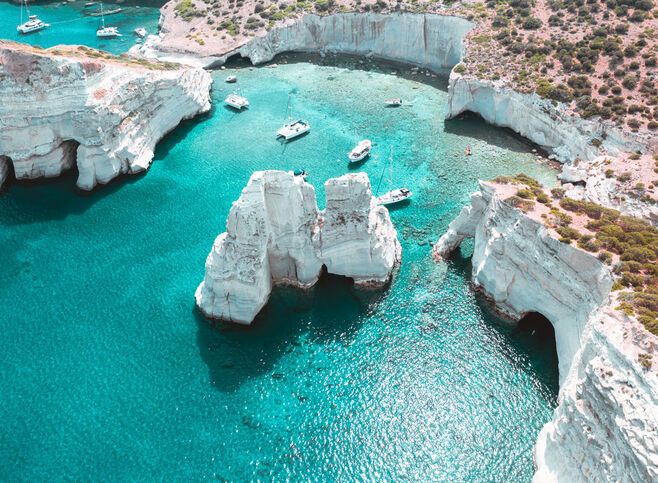This island, which is located in the southwest of the Cyclades, offers a number of unusual natural landscapes that were created as a result of volcanic activity, including enigmatic rock formations, intriguing soil colors, and countless jaw-dropping beaches.

At addition to possessing a wealth of unusual views, the island is also the birthplace of the famous marble Venus of Milo statue that can be found in the Louvre Museum today.

The numerous hot springs, caves, and geological formations of Milos, including Kanavas, Alykis, Provatas, Pikropigis springs, Papafragas and Sikia Caves, and Kleftiko Cove, are remnants of the island’s volcanic history.